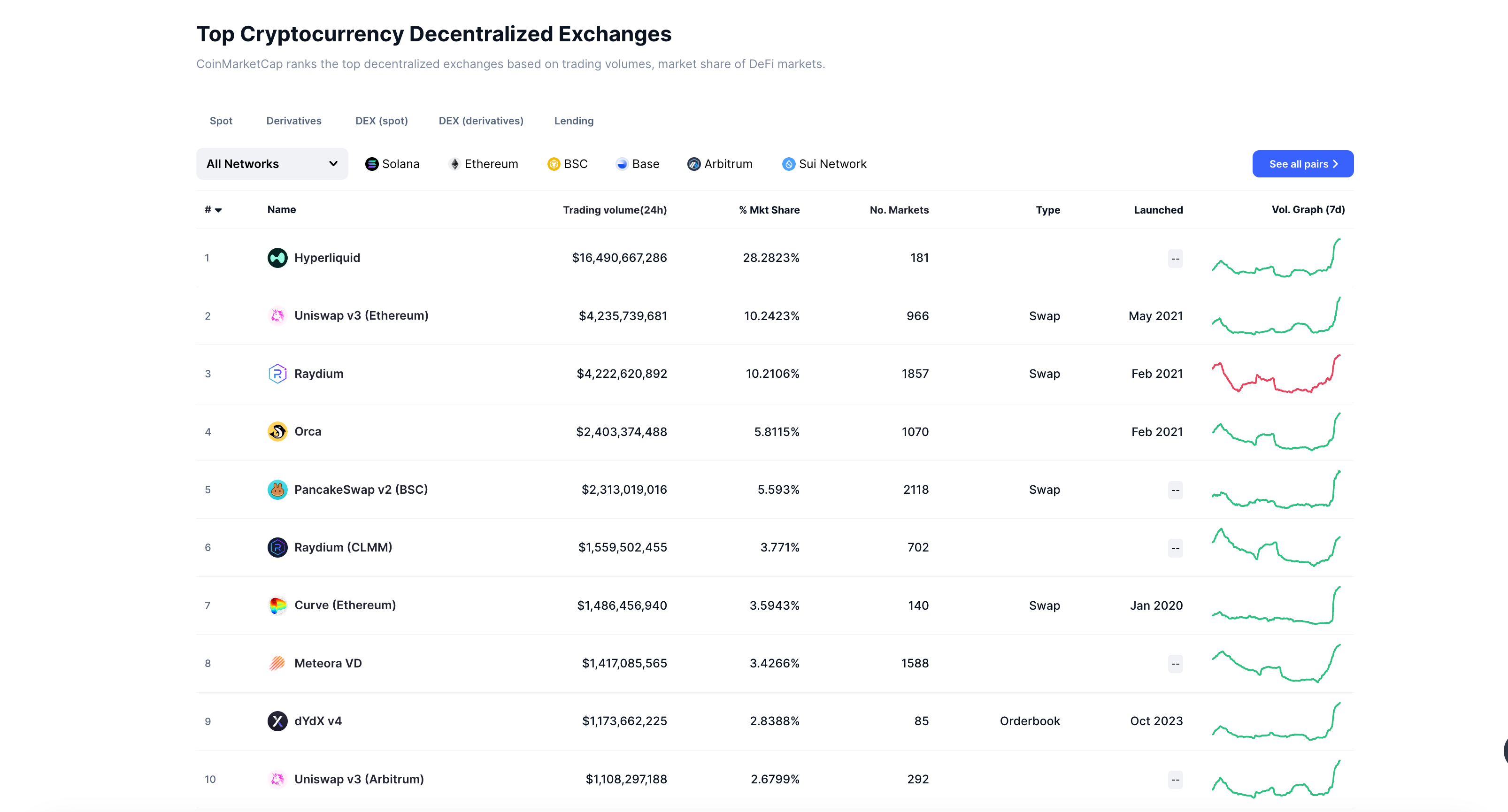
Learn the key steps, strategies, and pitfalls of TGE and token CEX listings.
Introduction
Bitcoin and Ethereum have already renewed their all-time highs and will continue to grow despite a small correction. At the same time, new crypto projects are hitting the market one after the other, and listings on centralized, not to mention decentralized, exchanges are happening every day. This, of course, makes every market participant optimistic and euphoric.
But have you ever wondered how exactly a token generation event (TGE) works and what the underwater rocks are around this process?
In today’s article, we want to take a closer look under the hood and get up to speed on the latest trends in the field.
Crypto startup life cycle
According to CoinMarketCap, there are over 10,000 crypto projects across various sectors. Despite their differences, they all follow a similar startup life cycle.
The journey begins with a spark—an idea to solve a problem or improve inefficiency—unless, of course, yours is just to make money and ride off into the sunset. A clear, compelling vision lays the foundation for everything to come. Even in the hype-driven world of meme coins, a unique twist can set a project apart.
Next is creating technical documentation: white papers, roadmaps, and other materials that serve as the project’s blueprint. These documents outline goals, the technology stack, and the business model, transforming skepticism into support and attracting investors and community buy-in.
The development brings the vision to life. The tech stack is built, tested, and audited to ensure security and functionality. Smart contracts, API integrations, and scalability solutions are vital for reliable real-world performance.
Non-technical processes run simultaneously. Marketing generates hype, branding establishes identity, and community building fosters loyalty. Partnerships expand the project’s reach within the crypto ecosystem, while early-stage fundraising—via venture capital or angel investors—provides the resources needed to fuel these efforts and cover operational costs.
Finally, after rigorous development, testing, and community engagement, the project reached its most visible milestone: token generation events and listings on exchanges.
Why is listing important for any project?
A project’s token isn’t just a digital asset—it’s the economic representation of its vision, expressed in monetary terms. Market capitalization, calculated as circulating supply multiplied by token value, provides a snapshot of the project’s perceived worth at any given time.
Listing is a top priority for project teams and investors, though the focus often shifts to “groundbreaking innovation.” Occasionally, unique solutions emerge that become trendsetters and significantly impact the DeFi landscape. We’ve made our previous videos about many of them. Beyond this, listing brings several benefits. It enables trading and liquidity, allowing community members to buy and sell tokens freely. This boosts trading volumes and generates more interest in the asset. The listing also opens access to new markets.
Exchanges connect tokens to unique audiences and geographies. For example, projects listed on Korean exchanges often experience surges in interest and trading volumes, even for non-initial listings.
Moreover, listing supports project development. Liquidity allows founders to cash out tokens and fund operations strategically, provided this aligns with the project’s financial model. A reputable exchange listing also builds credibility, signaling legitimacy that attracts investor trust and wider community interest – though this is often more psychological than technical.
In short, listing isn’t just a technical milestone; it’s a strategic move that fuels growth, partnerships, and long-term success.
Listing preparation playbook
Preparing for a TGE and listing may seem straightforward, but several necessary preparatory steps are crucial to overall success.
Many companies and agencies can help projects enter into negotiations with one or more of the CEXs as quickly as possible and, if necessary, guide projects through the process.
However, based on our experience, we would like to explain the whole process in detail. Conventionally, this process can be divided into 6 phases:
1) Creating a plan and research
2) Token listing documents
3) Market Maker negotiations
4) CEX negotiations
4) Community Building and Marketing
Let’s look at each of these points in more detail.
Creating a plan and research
Creating a clear plan is the first step to a successful listing strategy. This plan should be in line with your budget and objectives. It must also be supported by thorough research. Centralized exchanges, or CEXs, are generally divided into four tiers. Tier 1 includes major players such as Binance, Kraken, and Coinbase.

Source: CoinMarketCap
- Tier 2 includes platforms such as Bybit, OKX, and HTX.
- Tier 3 includes exchanges such as Gate, MEXC, and Bitget.
- Tier 4 represents the “Wild West”. This tier consists of smaller, often regional platforms, such as CoinW, competing for relevance.
DEXs and Tier 3 CEXs are the most practical options for projects with smaller budgets. In contrast, well-funded projects typically aim to list on Tier 1 exchanges. These projects often target platforms such as Binance or Coinbase. But they also use DEXs for wider reach.

Source: CoinMarketCap
Listing on a DEX is relatively easy and inexpensive. Deploying a smart contract on platforms like Uniswap or Meteora is often sufficient. However, listing on a CEX requires considerable effort and patience. This process involves a lot of paperwork. It’s like comparing a speedboat to a cruise liner. A speedboat is fast and uncomplicated. A cruise liner takes longer but offers greater stability and reach.
Balancing cost, time, and strategic priorities is essential. This will ensure that your listing plan is effective and that resources are not wasted.
Documents preparation
Once a clear plan is in place, the next step is document preparation. Projects need a well-crafted white paper. This document should outline their vision, mission, protocol mechanism, team, and roadmap. Think of it as the project’s CV. Robust tokenomics is equally critical. It should detail the token’s utility, vesting schedule, and distribution model. Without robust tokenomics, even great ideas can appear like Ponzi schemes.
Security and compliance are non-negotiable. A trusted third-party audit provider must verify the security of the protocol and token. Corporate documents and a legal opinion are necessary to ensure compliance with local regulations. Exchanges also demand transparency in fundraising history. This includes the latest valuation and a cap table that shows the ownership structure.
Each CEX has its listing application. These applications require detailed information about the company’s formation, financials, team, tokenomics, protocol mechanism, and community traction. The forms can be tedious to complete. However, once finished, they often serve as a universal key for other exchanges.
Projects must comply with Know Your Business (KYB) and Anti-Money Laundering (AML) regulations. KYB verifies the identities of stakeholders, helping reduce the risk of fraud. AML regulations prevent illegal activities such as money laundering. These can be thought of as the crypto world’s “no funny business” policies.

Finally, a crypto-friendly bank account is essential. Traditional banks often avoid working with crypto projects. Therefore, having a supportive financial partner is crucial for smooth operations and listing transactions.
Assembling these documents can feel like tackling a boss level in a game. However, it is a necessary step to ensure credibility, compliance, and a smooth path to lasting success.
Market Maker negotiations
Onboarding market makers or MMs is essential for any token listing strategy. Their main role is to ensure price stability, create liquidity, and provide a smooth trading experience on all exchanges where the token is listed. Without them, newly listed tokens often face wild price swings, wide bid-ask spreads, and low trading depth – commonly known as the “cold start problem.” Remember, when you click ‘buy on the market,’ you’re likely trading with a bot, not a human. MMs often start early, providing liquidity to pre-markets like Whales Markets.
Market makers generally operate under two models. In the loan-and-option model, the MM borrows tokens from the project to ensure liquidity and price stability for a set period. If the MM meets its obligations, it gets the right to buy tokens at a discounted price through a call option. This model is common among large projects. Alternatively, in the retainer-and-profit-share model, the project pays the MM a monthly fee for maintaining liquidity, often with a share of trading profits as an incentive.
Not all market makers play fair. Some engage in unethical practices like inflating trading volumes or pump-and-dump schemes. Even well-known MMs have been implicated in such manipulations. A recent FBI investigation into GotBit highlighted these issues and has deterred many from using such tactics. For more on this, check out our shorts on the case.
Choosing the right MM is crucial. A reliable MM can stabilize markets and assist with other key aspects, such as CEX negotiations, influencer engagement, and overall strategy execution.
CEX negotiations & listing fees
Negotiating with an exchange representative is one of the most difficult and stressful phases.
The cost of listing on a CEX is often a significant barrier to token launches.
CEXs typically take money from projects in three main ways: direct listing fees, refundable deposits, and marketing budgets. Listing fees depend on various factors, including project concept, team, achievements, reputation, exchange agreements, and many others. Often, two similar projects can pay different listing fees.
- On average, prices on third-tier exchanges such as MEXC start at $30k.
- Listing on tier 2 exchanges such as Bybit will cost at least $80k.
Prices on Binance range from $150,000 to $500,000 in stablecoins – or up to 8% of a project’s total token supply, which is used for so-called launchpools. Deposits, such as Binance’s requirement of up to $5 million in BNB, are only refunded if the project is delisted. In addition, exchanges often require a marketing spend from the project, ranging from $250k to $1 million for on-platform promotions, airdrops, or campaigns.
The exchanges have valid reasons for charging these fees – they’ve invested heavily in building their platforms and user bases. However, from a project perspective, diverting resources to exchanges instead of community growth can weaken long-term potential. A project should focus on attracting real users, not just appeasing exchanges.
However, there are cases where Binance or Coinbase can provide the token for free. For example, the Act and Peanut the Squirrel projects paid no listing fees to be listed. But this is more of an exception to the rules in the form of a marketing move by the Binance team.
Community Building and Marketing
A strong community is the backbone of any Web3 project – a loyal, almost cult-like fanbase ready to champion your vision. These early adopters aren’t just users; they’re your best marketers. To win them over, focus on Discord, Telegram, and Twitter. Discord and Telegram serve as town halls, while Twitter is your stage. Founders should share updates enthusiastically, and a clever intern can use memes to create virality – because humor reigns in crypto.
Ambassadors and influencers are vital, too. They expand your reach, build trust, and excite new audiences. Use platforms like Galxe or Layer3 to gamify engagement and reward participation. Airdrops can still attract loyalists, but beware of opportunists like farmers and sybils. Prioritize quality over quantity – a real community sticks around after the hype fades.
Marketing cuts through the crypto noise with strategy. Get coverage on outlets like The Block, Cointelegraph, and Coindesk, and work with Key Opinion Leaders to amplify your message. Publishing deep-dive research with firms like Messari, Delphi Digital, or CryptoRank can make your project a serious contender.
Above all, make it fun. Airdrops might bring users, but memes make believers. Strong marketing and community engagement can make the difference between success and obscurity in the lead-up to a token listing.
TGE Pitfalls
Token listings on centralized exchanges are often seen as a major milestone for crypto projects. They promise exposure, liquidity, and validation. However, if poorly managed, this perceived shortcut to success can lead to significant pitfalls. Many believe that a listing alone will drive value. Research by Animoca Brands shows otherwise. From January to September, most exchanges reported median post-listing token price drops of -40% to -70%. OKX outperformed Binance with smaller losses.
These results highlight the challenges of current market conditions.
Launching tokens with a high Fully Diluted Valuation and low circulating supply is a major issue. Exchanges for its inflated trading fees favor this model. However, it sets unrealistic expectations. Retail investors, insiders, and VCs often exploit these setups. They dump tokens early, leaving projects with tarnished reputations and minimal traction. The reliance on incentivized farming and airdrop strategies worsens the problem. These tactics boost short-term metrics like Total Value Locked or TVL. However, they attract speculators instead of genuine users. Once these speculators sell their tokens, prices crash. User retention also plummets.
Overreliance on CEXs is another common trap. Projects frequently spend heavily on listing fees or token allocations. They hope for success, but they face strained finances and damaged credibility if the listing fails. Their options for recovery become limited. Failed launches often lead to market dumping. They disillusion investors and cause long-term reputational harm.
To mitigate these risks, projects should prioritize organic growth before listing. Tokens with real utility and active communities tend to perform better with secondary listings, which works better than rushed primary launches. Realistic valuations help avoid the pitfalls of inflated FDVs. Reducing reliance on airdrops also protects the token value and fosters loyal user bases. A successful listing depends on strategic planning and careful resource allocation. It should be treated as a milestone, not a gamble.
Survivorship bias or the birth of a new meta
The past few months have seen significant market events, but one of the most notable was Hyperliquid’s TGE, which could set a new standard in DeFi. Let’s break down this remarkable case.
Hyperliquid was initially designed as a perpetual derivatives exchange, built on its own Layer 1 blockchain using Cosmos SDK. We’ve also made a great video about the Cosmos SDK, and we encourage you to watch it if you haven’t already.
On paper, Hyperliquid seemed like another shadow version of platforms like dYdX or GMX and gained little traction early on. However, after nearly two years on the main net, Hyperliquid has transformed into a robust Layer 1 blockchain with a thriving infrastructure and strong market fit.
Co-founder Jeff Yan, a former quant analyst and hedge fund founder, revealed that the collapse of FTX inspired Hyperliquid. This event eroded trust in CEXs, while DeFi lacked a comparable user experience. The team set out to build a platform for on-chain perpetual trading that could compete with CEXs and outperform them in many ways. Remarkably, they succeeded – more than 30% of all on-chain derivatives transactions now occur on Hyperliquid.
What makes Hyperliquid stand out is its self-funded growth. The team took no outside funding from venture capital or other sources and did not charge market-making fees. All income was reinvested into the community, embodying long-term thinking. This approach contrasts sharply with most crypto projects, where VCs are the real users and other participants serve as exit liquidity.
Hyperliquid’s TGE on November 29 was a landmark event for two reasons. First, the project airdropped 310 million $HYPE tokens, or 31% of the total supply to active users, the largest airdrop in crypto history. At the time of recording, this was worth $8.27 billion. Despite immense sell pressure as users cashed out, Hyperliquid weathered the storm and achieved one of the best performances in recent years. The $HYPE token price soared from $2 to $26 in three weeks.
Second, the $HYPE token was listed exclusively on Hyperliquid’s platform, bypassing CEXs entirely. This forced CEXs into a dilemma: list their competitor’s token at their own expense or risk losing customers who would leave to buy $HYPE on Hyperliquid. The strategy attracted numerous institutional investors who lined up to buy the token.
Hyperliquid’s success demonstrates that focusing on exceptional product development can generate organic hype and trading volumes without reliance on CEX listings or VC funding. This case may signal the beginning of a new “No VC, No CEX” meta for crypto projects.
Conclusion
Marketing is crucial in Web3, and a well-executed strategy can generate the hype needed for a successful token listing on a centralized exchange. This often leads to increased buyer interest. However, in the attention economy, there comes a tipping point when users shift to other projects. Before that moment, founders must ask themselves: am I building a product to profit or to create meaningful change?
The listing process is complex, often driven by exchanges selecting projects rather than the other way around. Exchanges look for projects with strong traction, engaged communities, and long-term growth potential.
The most effective strategy is to create a product that genuinely serves users’ needs. A relevant, valuable product will drive token appreciation over time alongside the project’s overall success.
READ MORE
- AgentFi: How AI & Blockchain Are Transforming DeFi
- Unveiling the Secrets of FHEML
- How will DePIN change our lives?

Ready to Elevate Your Business Strategy?
At OQTACORE, we craft Web3, Blockchain, Mobile, and Web solutions designed to help businesses scale, innovate, and succeed.
